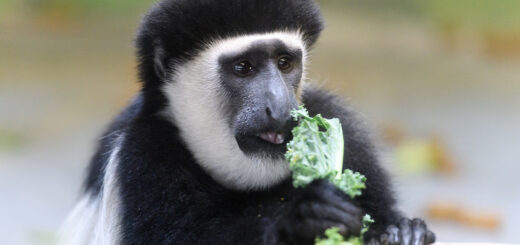Browse – how much is enough? The challenges of assessing browse intake
Citation
Livingston S, Lavin S, Sullivan K, Valdes E. 2013. Browse- How much is enough? The challenges of assessing browse intake. In Ward A, Coslik A, Mahan K, Treiber K, Reppert A, Maslanka M, Eds. Proceedings of the Tenth Conference on Zoo and Wildlife Nutrition, AZA Nutrition Advisory Group, Salt Lake City, UT.
Abstract
Browse is an important dietary component for many herbivore diets. Animals such as giraffe, black rhino, kudu, bongo, gerenuk, porcupines and many others consume a significant amount of browse as their natural diet. Providing sufficient quantities and appropriate browse species is one of the most challenging aspects of feeding animal collections in a zoological setting. At Disney’s Animal Kingdom, we consider ourselves extremely fortunate to have access to a significant amount of browse. We have approximately 100 acres dedicated to growing a variety of species that are propagated and harvested for our animal collection throughout the year. We also have access to browse that can be purchased during winter months when our fields are not as productive. Our primary warm weather browse species are Carolina willow (Salix caroliniana), banana (Musa sp.), elephant grass (Pennisetum purpureum), and mulberry (Morus alba). During the cooler months, our primary species are ear leaf acacia (Acacia auriculiformis) (purchased from south Florida), Japanese blueberry (Elaeagnus sylvestris, Silverberry (Elaeocarpus pungens), bamboo (Phyllostachys sp.) and Acacia longifolia.
One of our challenges involves providing an appropriate amount of browse in the daily diet of our browsing species. First, we need to determine what constitutes an appropriate amount of browse. For many species, our goal is to provide approximately 30% of a balanced diet as browse. At times, we can provide 30% of diet as browse, but the challenge then becomes providing 30% of their diet as browse they will eat.
Over the past 12 months, we have endeavored to determine the intake of our available browse species by our browsing animals so that we can better focus the amounts and species propagated in our browse fields. Animal areas with target browsing species were visited in the spring of 2012 to discuss intake and acceptance of the warm weather browse species. In early 2013, we sent a browse survey to the animal areas to get their opinions on animal browse preference and intake. Results of the visits and surveys indicate that it depends…. (on keeper, animal, day of the week, season…).
More work is needed to better understand the consumption patterns of different species and individuals and figure out how to use that information to maximize the productivity of the browse fields and the consumption of available browse. Communication is essential to ensure that the browse and other parts of the diet are consumed in the appropriate quantities. Our undertaking of the past year has demonstrated that we need to continue to work closely with
horticulture and animal care to make sure that the right browse species are propagated, harvesting levels are appropriate for the plants and animal needs and that all partners are aware of and understand the goals and limitations of the browse program. Certainly more work is needed with regards to assess intake of nutrients based on browse consumption and the overall effect of browse in nutrient balance.
 15_Livingston.pdf 92 KB
15_Livingston.pdf 92 KB








